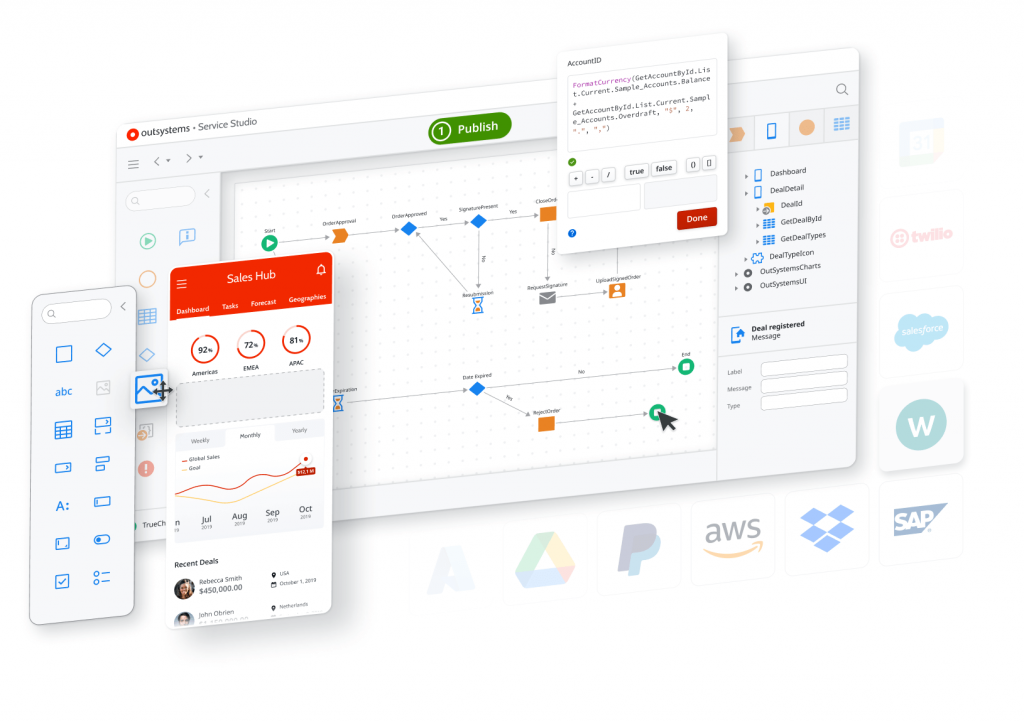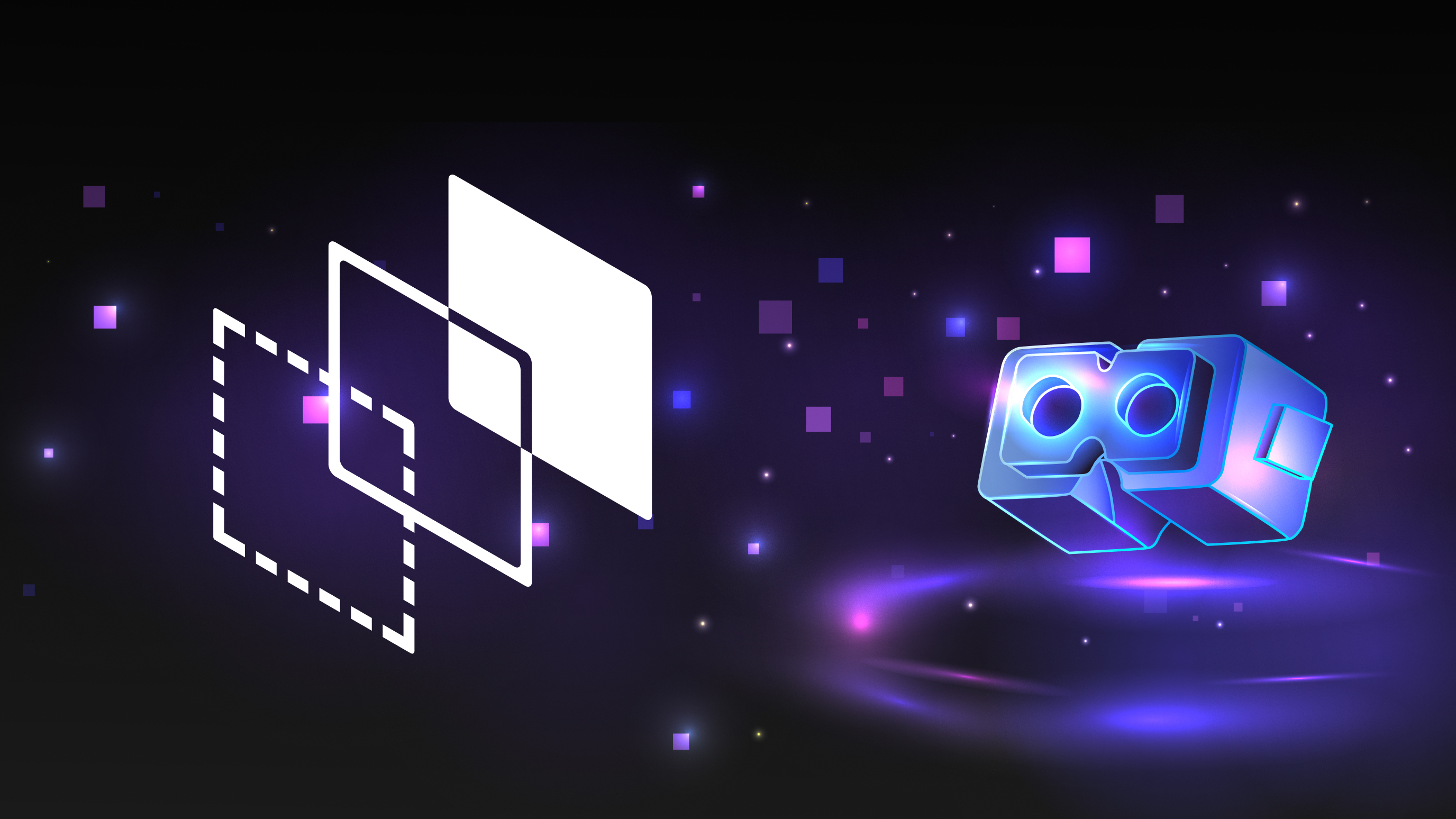Seeing as we’re a third of the way through 2022, the DiUS XD team thought now would be a good time to reflect on the past few months, take a closer look at current market trends and discuss what the rest of the year could have in store.
Looking ahead, we believe design and experience should be key to revitalising retail, understanding customers’ rising expectations for digital products and honing in on the new opportunities that will come from people reassessing their lives, work and play – the need to simplify, support new learning, reduce stress and emphasise sustainability.
There’s been a lot of change, there’s more to come, and it never stops – but our team is focused on bringing the human side into every solution – solve a real problem, provide real value and make it as easy as possible to achieve what’s needed.
Here are some of the things we’ve been looking into recently and plan to work on for the remainder of this year.
Cross-functional design systems
By Carl Thompson
Design systems have become part of a modern product delivery approach. At a foundation level, a design system establishes the essential design elements of a product – fonts and typography, colours and spacing. These basic elements form the foundation for reusable components and patterns of interaction that build towards a consistent user experience across a product’s various touchpoints.
The benefits go beyond just the visual layer too. Having a common language between design and code makes it easier for cross-functional teams to communicate and collaborate. Design systems that leverage coded components as part of their library not only save an enormous amount of time, they translate to higher consistency in code.
The tools designers and developers can use to establish design systems are inching closer together. Storybook and Bit are leading the way in this space. It is also really exciting to see tools like UXPin+Merge that have the potential to bridge the gap between design and code. The holy grail is a tool that designers and developers can jointly collaborate and contribute to. This is so important because design systems are not a one and done solution. They require maintenance and are constantly evolving to meet the needs of the product it supports.
This year at DiUS, we are exploring how we might help product teams lead a cross-functional approach to design systems. Can we establish a flexible foundation that can accelerate creation and enable product teams to take advantage of design systems for the products we build?
The metaverse and mixed reality
By Anita Potucek
The metaverse. The hype has been buzzing since Facebook (now called Meta) announced its vision to bring ‘the next evolution of social connection’. Since then, companies like Nvidia, Microsoft, Apple and Niantic and more have announced heavy investments in building or enabling the metaverse. But what is it? How close is it to becoming reality?
Today we navigate the internet through the screens of computers, smartphones and tablets. We can shop online, make video calls, play games, watch movies or concerts and engage with content all on these 2-dimensional devices. The metaverse claims to upgrade this experience into a 3-dimensional, immersive virtual world experienced through the combination of VR, AR, smart displays and other connected technologies that we can navigate with our personalised, digital avatars. For example, instead of shopping for clothes on your laptop, you could put on your VR headset and walk through a 3D shop, virtually trying on clothing.
‘The Metaverse’ isn’t really a new concept as gamers will argue virtual worlds have existed for years. Many of the features already exist in platforms like Fortnite, Rec Room, Second Life and VRChat. However if the metaverse takes off as supporters believe it will, it could transform the way we work, socialise, enjoy content and bring us closer to a blended reality where VR and AR are no longer just for gamers.
The biggest challenge today is that the technology isn’t quite there yet. VR headsets are notoriously expensive – a problem Facebook is actively working on solving. Apple and Google are both in the process of developing VR/AR glasses. Google is also working on an experimental 3D telepresence booth called Project Starline. However most of these devices are still a long way off being used by the general public and one of the reasons why is that underlying technology to support them still needs to be optimised. Intel recently predicted that computers will need to be 1,000 times more efficient to support the metaverse. Nvidia is currently working on an open platform for virtual collaboration and real-time physically accurate simulation. Pokémon GO mastermind Niantic is also developing a state-of-the-art planet scale AR platform for current and future generations of hardware. A lot of activity is happening in this space however not much is available for consumers just yet.
With the metaverse not expected to see the light of day until roughly 2030, companies are actively building the foundations that will support VR and AR technologies in a more accessible and affordable way. What it will be used for, what problems it will actually solve and how the metaverse will become an everyday part of our lives is still largely conceptual.


Low-code/no-code tools
By Anthony Vermeulen
A low-code or no-code tool is a platform that enables you to build applications through a simple UI. Low-code tools are best suited to developers, as they still require some subject matter expertise. However, no-code tools are typically aimed at those with no technical expertise – think drag and drop website builders.


With several organisations suffering from a reliance on IT professionals, which can cause problems like application backlogs and assignment overload, the adoption of and investment in low/no code tools has exploded over the past year. This has also resulted in thriving communities, where users can support each other and share ways in which to implement their ideas without having to write code.
The DiUS team recently conducted a market scan to assess the state of the low/no code market. We came up with a curated list of 160 products classified into 12 categories ranging from chatbots to website builders, trading automation platforms to big data operations.
This market hasn’t gone unnoticed by consultancies and agencies either, many of which are now making these tools a key part of their offering. With the promise of quicker prototyping, product and MVP development alongside lower costs and greater automation, low/no code has the potential to accelerate client work.
Low/no code tools clearly have their advantages for both organisations wanting to manage their own digital footprint in-house and for consultancies that need to provide added value to their clients, such as rapid prototyping and getting new ideas to market. But after our own investigations, we feel the following considerations should be kept in mind before suggesting the use of a low/no code tool:
- Is it a developer friendly solution (APIs, configurable etc.) or is it purely targeted at non-technical people?
- Data ownership – is it self-hostable? What type of data is being sent to servers? Who owns the IP?
- Security – how does adding the tool into a solution/workflow affect the perimeter?
- What is its suitability for external and customer interactions?
- Are you locked in or can you export all/most code, logic, UI etc?
- Are we willing or even able to provide support for implementations?
We’ll be keeping a close eye on the low/no code market and plan to test our assumptions about misalignment between DiUS and tools for operations. We also want to investigate more of the key tools that exist right now, measuring time savings of app builders for prototyping and validating products.
Experience and service design at DiUS
The buzz around emerging technologies like ML, Web 3.0 and the metaverse is huge – but predicting the way they will evolve and impact our lives is difficult so early. The linking thread is the work needed to understand how the needs and pressures of our everyday lives will be enhanced by new technologies – beyond the hype – through research, experimentation and design. Uncovering the value that something like decentralised records and merging data and the physical world might bring. Equal parts imagination, vision and sweat is needed.
The key to our success at DiUS is our focus on bringing the best of emerging technology into enhancing the products and services our client’s customers need. Using what’s mature enough – enough to get the results needed – to create innovative solutions. For example, AI is still developing exponentially and is nowhere near its ultimate potential – but computer vision is a well understood and viable option to solve key problems in surveying, analysis or monitoring.
If you would like to discuss any of these ideas or trends in more detail, or want to hear our thoughts on where you should be positioning your organisation from an emerging tech perspective, get in touch with us.

